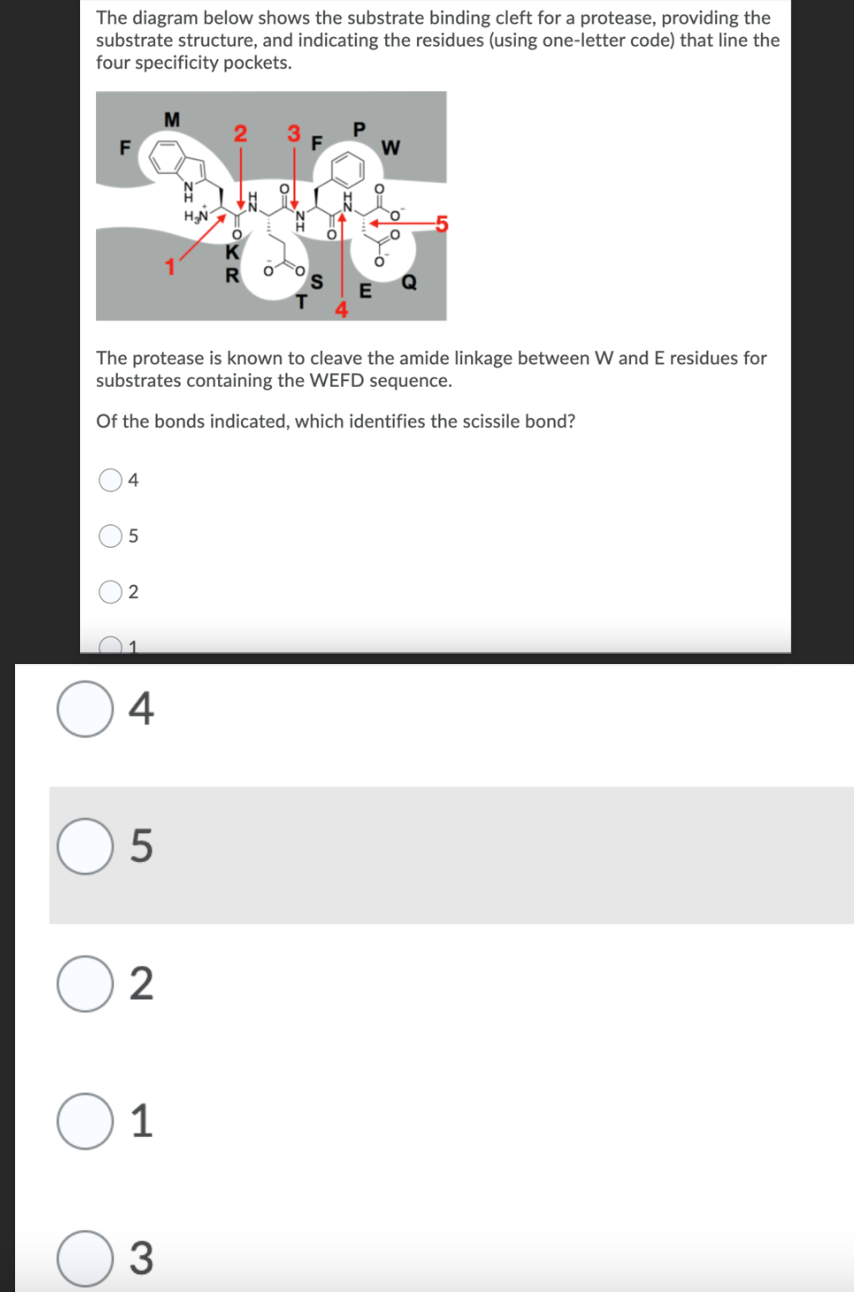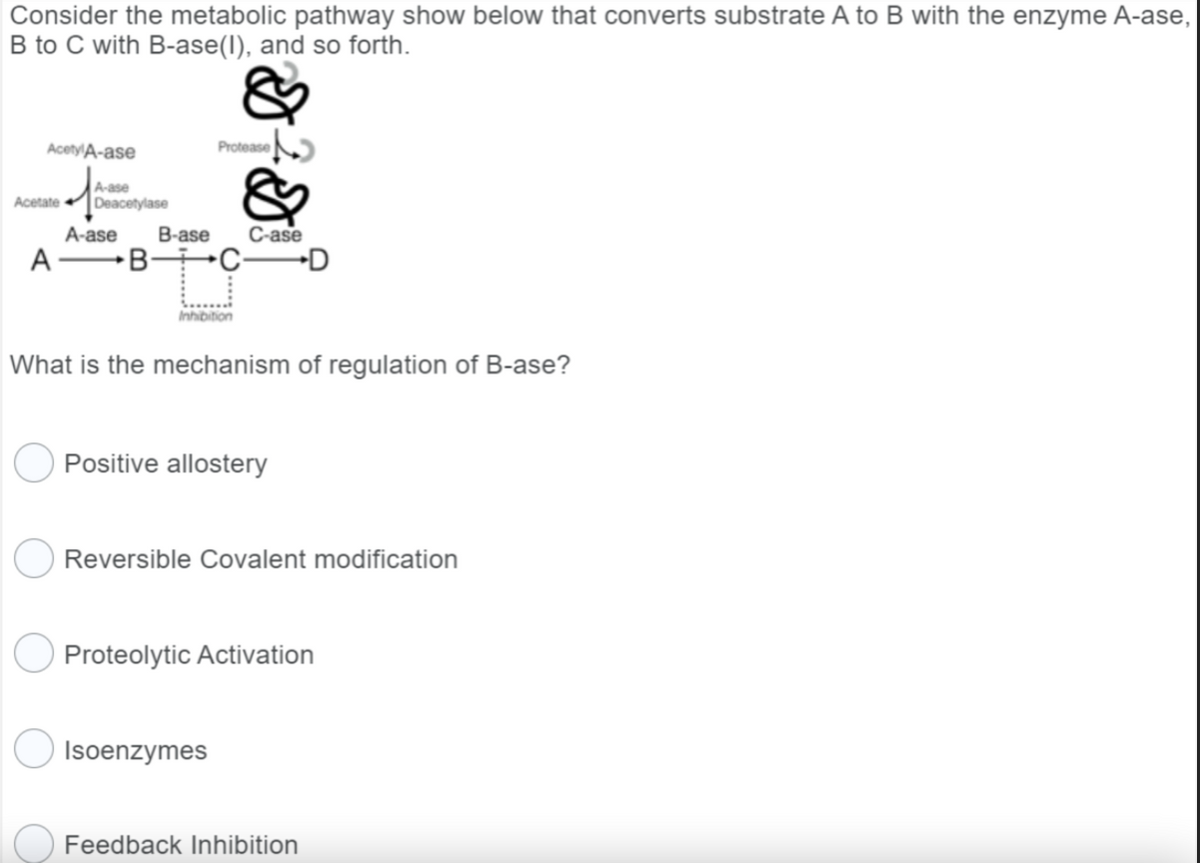The diagram below shows the substrate binding cleft for a protease, providing the substrate structure, and indicating the residues (using one-letter code) that line the four specificity pockets. F 4 5 2 4 5 2 1 M The protease is known to cleave the amide linkage between W and E residues for substrates containing the WEFD sequence. Of the bonds indicated, which identifies the scissile bond? 3 H₂N 2 3 IN ON F P W
The diagram below shows the substrate binding cleft for a protease, providing the substrate structure, and indicating the residues (using one-letter code) that line the four specificity pockets. F 4 5 2 4 5 2 1 M The protease is known to cleave the amide linkage between W and E residues for substrates containing the WEFD sequence. Of the bonds indicated, which identifies the scissile bond? 3 H₂N 2 3 IN ON F P W
Biochemistry
6th Edition
ISBN:9781305577206
Author:Reginald H. Garrett, Charles M. Grisham
Publisher:Reginald H. Garrett, Charles M. Grisham
Chapter27: Metabolic Integration And Organ Specialization
Section: Chapter Questions
Problem 20P: Figure 27.3 illustrates the response of R (ATP-regenerating) and U (ATP-utilizing) enzymes to energy...
Related questions
Question

Transcribed Image Text:The diagram below shows the substrate binding cleft for a protease, providing the
substrate structure, and indicating the residues (using one-letter code) that line the
four specificity pockets.
F
4
5
2
4
5
2
The protease is known to cleave the amide linkage between W and E residues for
substrates containing the WEFD sequence.
Of the bonds indicated, which identifies the scissile bond?
1
M
3
N
H₂N
2
O
3
F
W

Transcribed Image Text:Consider the metabolic pathway show below that converts substrate A to B with the enzyme A-ase,
B to C with B-ase(I), and so forth.
Acety/A-ase
A-ase
Acetate Deacetylase
D
Protease
B-ase C-ase
A-ase
ABC-
What is the mechanism of regulation of B-ase?
Positive allostery
Reversible Covalent modification
Isoenzymes
Proteolytic Activation
Feedback Inhibition
Expert Solution
This question has been solved!
Explore an expertly crafted, step-by-step solution for a thorough understanding of key concepts.
This is a popular solution!
Trending now
This is a popular solution!
Step by step
Solved in 4 steps

Recommended textbooks for you

Biochemistry
Biochemistry
ISBN:
9781305577206
Author:
Reginald H. Garrett, Charles M. Grisham
Publisher:
Cengage Learning

Biochemistry
Biochemistry
ISBN:
9781305577206
Author:
Reginald H. Garrett, Charles M. Grisham
Publisher:
Cengage Learning